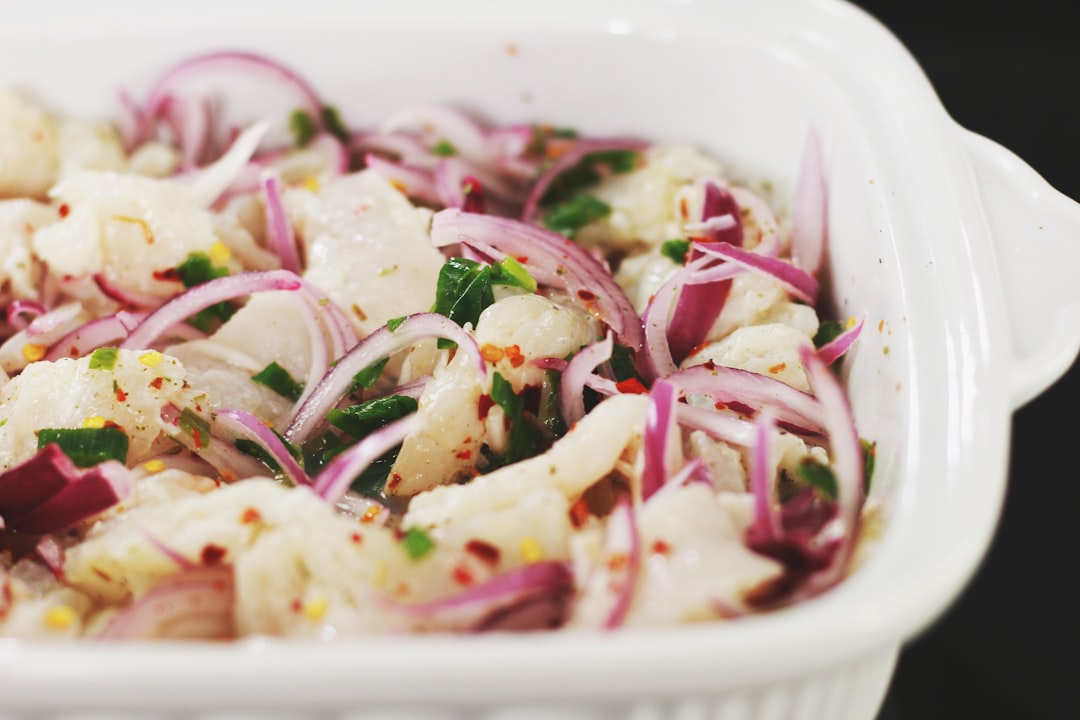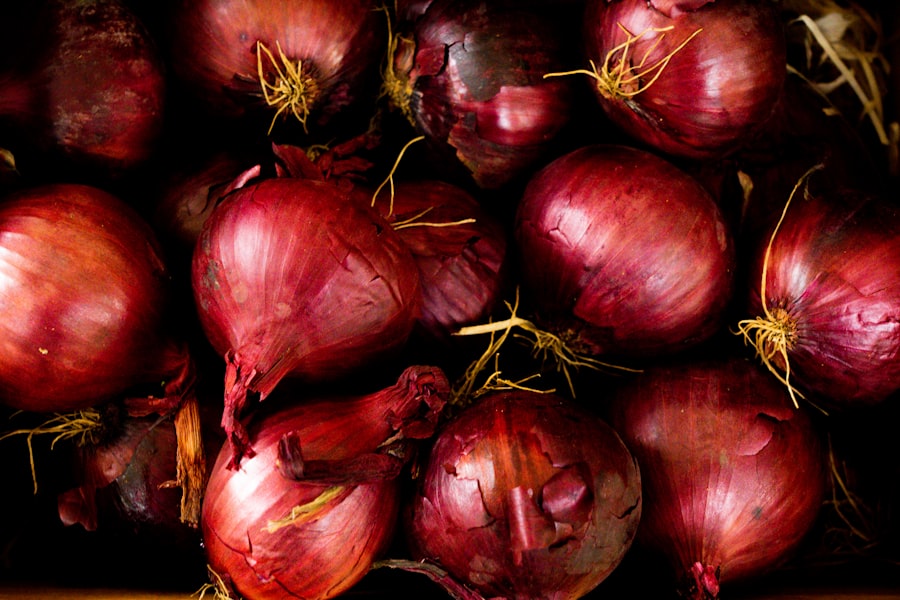Growing Red Onions: Planting Tips

Red onions are a versatile and flavorful addition to any garden. Not only do they add a pop of color to your vegetable patch, but they also offer a range of health benefits. Red onions are packed with antioxidants and have anti-inflammatory properties, making them a great addition to a healthy diet.
To successfully grow red onions, it is important to choose the right location and prepare the soil properly. Red onions thrive in full sun and well-drained soil, so finding a spot in your garden that meets these requirements is crucial. Additionally, preparing the soil by adding organic matter and ensuring proper drainage will set your red onions up for success.
Key Takeaways
- Choosing the right location is crucial for growing red onions
- Preparing the soil properly is important for successful onion growth
- Selecting the best red onion varieties for your garden can make a big difference
- Starting red onion seeds indoors can give you a head start on the growing season
- Planting red onion sets at the right time and depth is key to a good harvest
Choosing the Right Location for Growing Red Onions
Red onions require specific growing conditions to thrive. They prefer full sun, which means they need at least six hours of direct sunlight each day. This helps promote healthy growth and bulb development. When selecting a location for your red onions, make sure it receives ample sunlight throughout the day.
In addition to sunlight, red onions also require well-drained soil. They do not tolerate standing water or soggy conditions, as this can lead to rot and disease. Choose a location in your garden that has good drainage or consider creating raised beds to ensure proper water flow.
Preparing the Soil for Planting Red Onions
Before planting red onions, it is important to prepare the soil properly. Red onions prefer loose, well-drained soil that is rich in organic matter. This helps provide the necessary nutrients for healthy growth and bulb development.
To prepare the soil, start by removing any weeds or grass from the area where you plan to plant your red onions. This will help prevent competition for nutrients and space. Next, incorporate organic matter such as compost or well-rotted manure into the soil. This will help improve its structure and fertility.
Selecting the Best Red Onion Varieties for Your Garden
| Variety | Days to Maturity | Bulb Size | Flavor | Storage Life |
|---|---|---|---|---|
| Red Burgundy | 90-100 | Medium | Mild | 3-4 months |
| Redwing | 100-110 | Large | Mild | 4-5 months |
| Candy | 95-105 | Medium | Sweet | 3-4 months |
| Red Zeppelin | 100-110 | Large | Spicy | 4-5 months |
There are several popular red onion varieties to choose from, each with its own unique characteristics. Some popular varieties include Red Baron, Red Bull, and Red Zeppelin.
When choosing a variety, consider factors such as size, flavor, and storage capabilities. Some varieties are better suited for fresh use, while others are better for storage. Additionally, consider the climate in your area and choose a variety that is well-suited for your growing conditions.
Tips for Starting Red Onion Seeds Indoors
Starting red onion seeds indoors can give you a head start on the growing season and allow you to have larger bulbs at harvest time. It also gives you more control over the growing conditions and allows you to select specific varieties that may not be available as sets.
To start red onion seeds indoors, begin by filling seed trays or pots with a seed starting mix. Moisten the mix before planting the seeds to ensure good germination. Plant the seeds about ¼ inch deep and cover them lightly with soil. Place the trays or pots in a warm location with plenty of light.
Planting Red Onion Sets: When and How to Do It

Planting red onion sets is another option for growing red onions. Sets are small bulbs that have been grown from seed the previous year and are ready to be planted. They are easier to handle than seeds and can be planted directly into the garden.
The best time to plant red onion sets is in early spring, as soon as the soil can be worked. Before planting, make sure the soil is well-prepared and free of weeds. Dig a small hole for each set, about 1-2 inches deep, and place the set in the hole with the pointed end facing up. Cover the sets with soil and water thoroughly.
Watering and Fertilizing Red Onions: Dos and Don’ts
Red onions require consistent moisture throughout the growing season, but they do not tolerate soggy conditions. It is important to water them regularly, especially during dry periods, but be careful not to overwater.
When it comes to fertilizing red onions, it is best to use a balanced fertilizer that is high in nitrogen. This will help promote healthy leaf growth and bulb development. Apply the fertilizer according to the package instructions, being careful not to overdo it.
Managing Pests and Diseases in Red Onion Plants
Red onions can be susceptible to a variety of pests and diseases, including onion maggots, thrips, and fungal diseases such as downy mildew and botrytis leaf blight. To prevent these issues, it is important to practice good garden hygiene and monitor your plants regularly.
To prevent pests, keep your garden clean and free of debris. Remove any weeds or grass that may harbor pests and regularly inspect your plants for signs of infestation. If you do notice pests, there are organic pest control methods available, such as using insecticidal soap or neem oil.
Harvesting Red Onions: Signs of Maturity and Best Practices
Knowing when to harvest red onions is crucial for optimal flavor and storage. Red onions are typically ready for harvest when the tops start to yellow and fall over. This indicates that the bulbs have reached maturity and are ready to be harvested.
To harvest red onions, gently loosen the soil around the bulbs with a garden fork or trowel. Lift the bulbs out of the ground, being careful not to damage them. Once harvested, allow the bulbs to dry in a warm, well-ventilated area for a few days before storing.
Curing and Storing Red Onions: How to Keep Them Fresh for Months
Curing red onions is an important step in the harvesting process that helps extend their shelf life. Curing allows the outer layers of the onion to dry and form a protective layer, which helps prevent rot and spoilage.
To cure red onions, spread them out in a single layer in a warm, dry location with good air circulation. This can be done indoors or outdoors, as long as the location is well-ventilated. Allow the onions to cure for about two to three weeks, or until the outer layers are dry and papery.
Creative Ways to Use Red Onions in the Kitchen: Recipes and Ideas
Red onions are a versatile ingredient that can be used in a variety of dishes. They add a sweet and tangy flavor to salads, salsas, and sandwiches. They can also be caramelized or pickled for a unique twist.
One popular recipe that incorporates red onions is a red onion and goat cheese tart. This savory tart combines the sweetness of caramelized red onions with the creaminess of goat cheese for a delicious appetizer or main course.
Growing red onions can be a rewarding experience that allows you to enjoy fresh, flavorful onions right from your own garden. By choosing the right location, preparing the soil properly, and following best practices for planting and care, you can have a successful harvest of red onions. So why not give it a try and add some color and flavor to your garden this year?
If you’re looking for a comprehensive guide on how to plant red onions, look no further than Lawn World’s informative article. This step-by-step tutorial provides all the necessary information and tips to ensure a successful onion planting experience. From selecting the right variety to preparing the soil and caring for your plants, this article covers it all. Check out Lawn World’s article on how to plant red onion and get ready to enjoy a bountiful harvest of delicious red onions.
FAQs
What is a red onion?
A red onion is a type of onion that has a purplish-red skin and white flesh. It is commonly used in cooking and has a slightly milder flavor than yellow or white onions.
When is the best time to plant red onion?
The best time to plant red onion is in the early spring, as soon as the soil can be worked. This is usually around March or April, depending on your location.
What kind of soil do red onions prefer?
Red onions prefer well-drained soil that is rich in organic matter. The soil should have a pH between 6.0 and 7.5.
How deep should I plant red onion?
Red onion should be planted about 1 inch deep, with the pointed end facing up. The rows should be spaced about 12 inches apart.
How often should I water red onion?
Red onion should be watered regularly, about once a week. The soil should be kept moist but not waterlogged.
How long does it take for red onion to mature?
Red onion takes about 100-120 days to mature. The bulbs will be ready to harvest when the tops start to yellow and fall over.
How do I harvest red onion?
To harvest red onion, gently pull the bulbs out of the soil and lay them on the ground to dry for a few days. Once the tops are completely dry, cut them off and store the bulbs in a cool, dry place.



